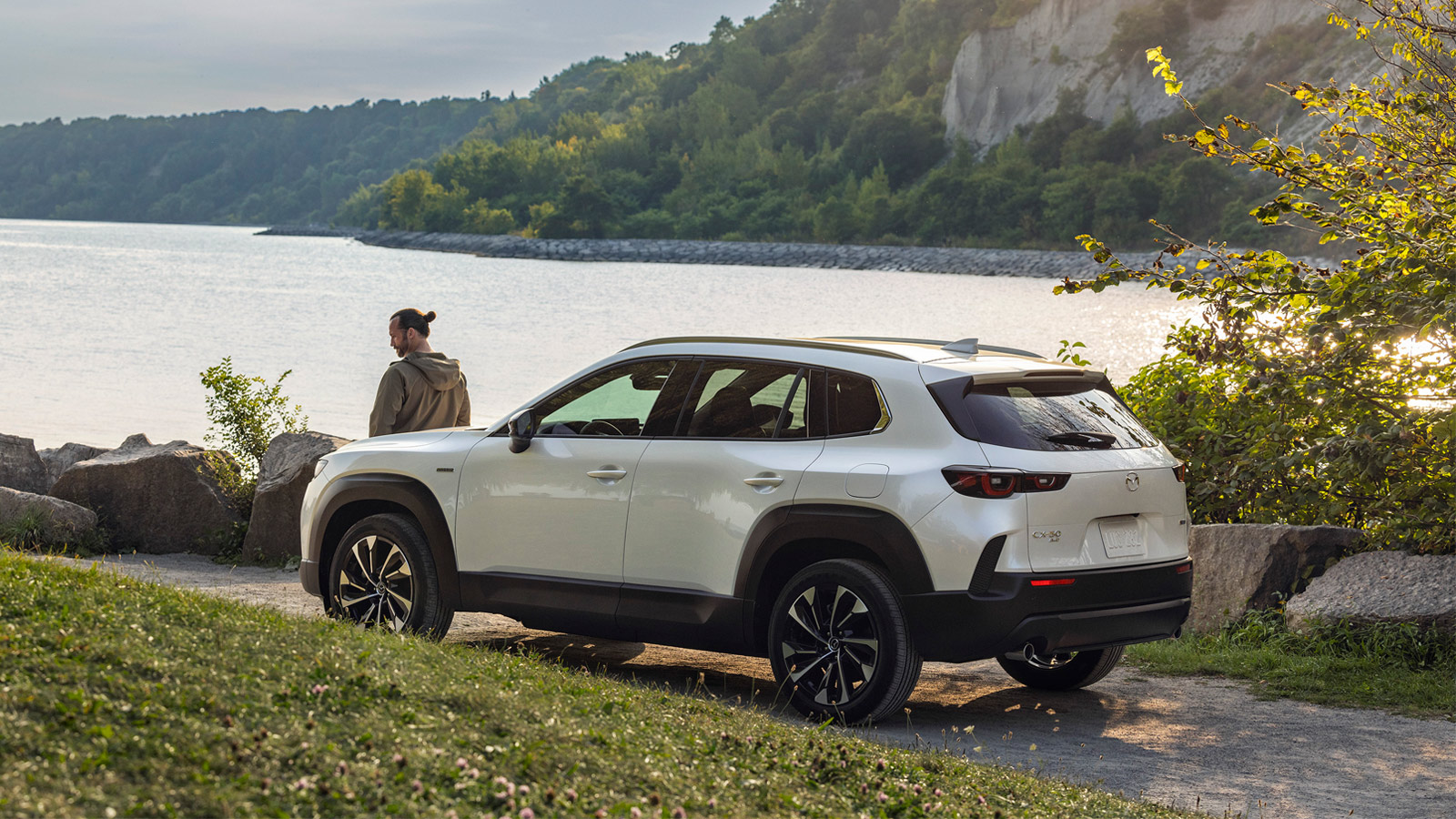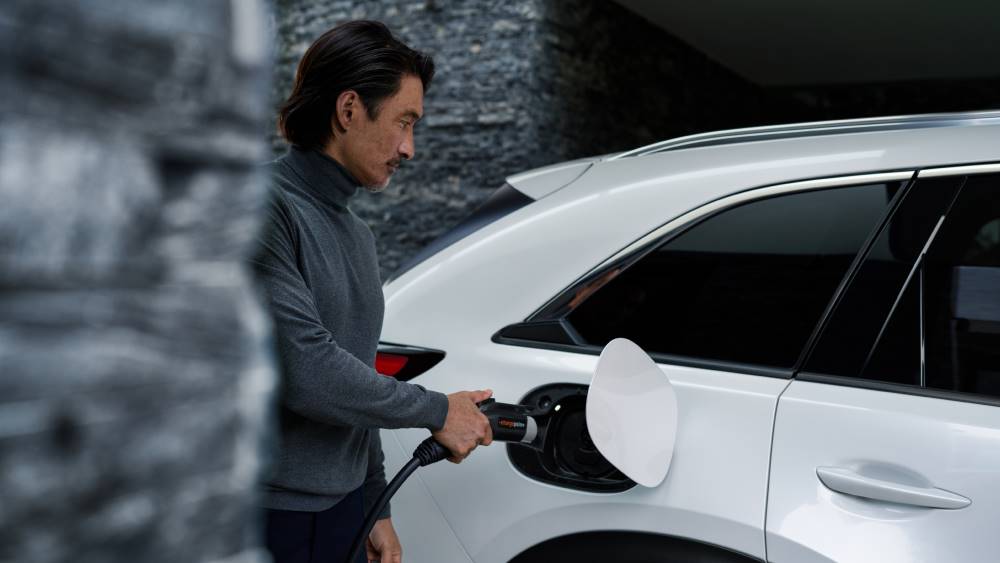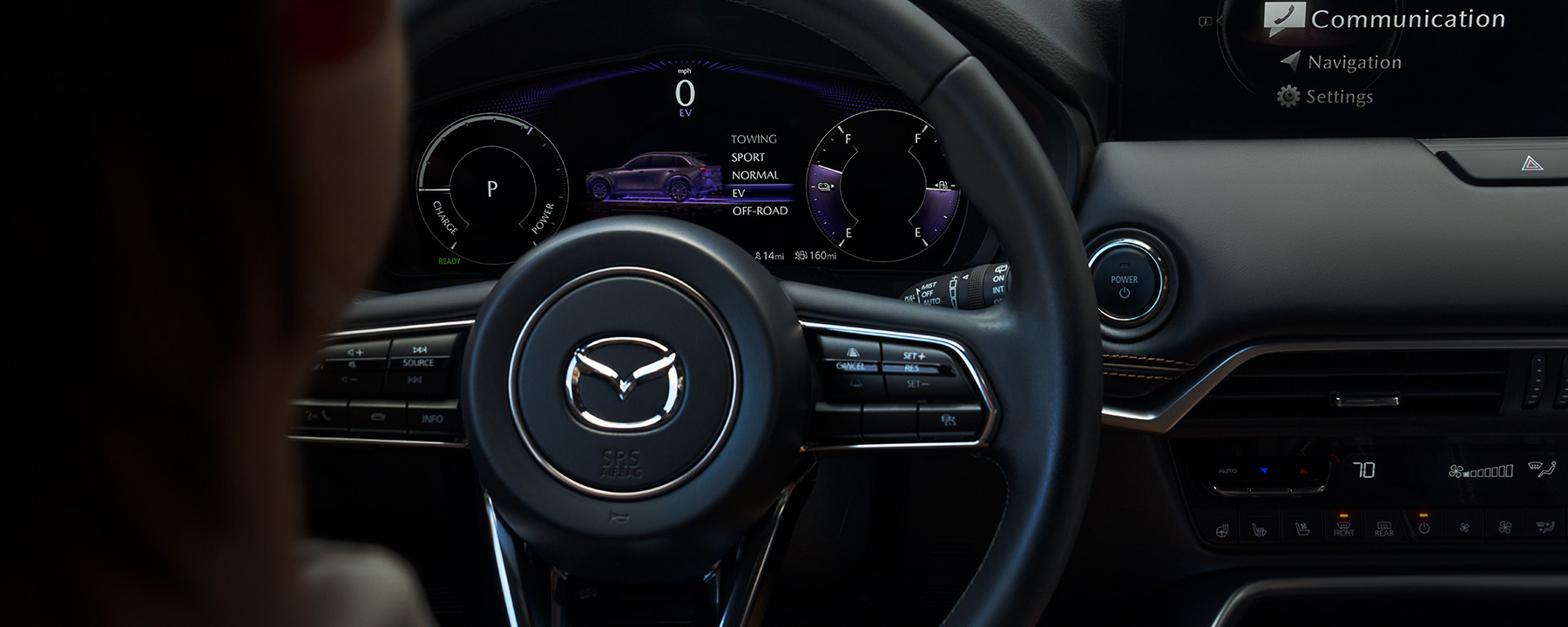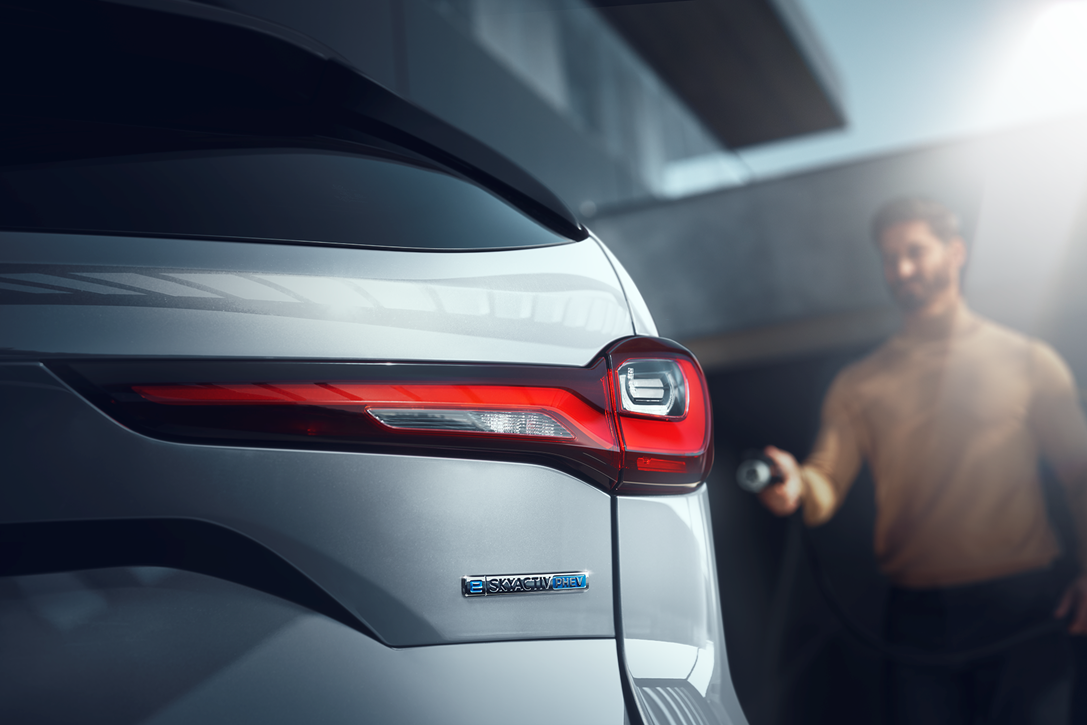Hybrids vs. Plug-in Hybrids: Exploring the Differences and Advantages of Each

Traditional hybrid electric vehicles (HEVs) and plug-in hybrid electric vehicles (PHEVs) are two types of electric vehicles (EVs) that can be differentiated by how each vehicle type charges its battery.
● An HEV charges its smaller battery through both frenos regenerativos and the internal combustion engine (ICE), meaning it doesn’t need to be plugged in.
● A PHEV charges a larger battery primarily by plugging it into an external power source, enabling short trips on electric power alone.
If you’re comparing traditional hybrids vs. plug-in hybrids with the intent to buy or lease, know that each vehicle type has its pros and cons depending on what you’re looking for in an EV. To help you choose the vehicle that aligns with your needs and preferences, let’s take a closer look at the differences between traditional hybrids (HEVs) and plug-in hybrids (PHEVs).
2025 Mazda CX-90 PHEV Premium Plus with options.
How Traditional Hybrids and Plug-in Hybrids Are Similar
Before we can understand their differences, it’s important to understand hybrid vehicles in general and how these variants are related. A hybrid vehicle is a type of vehicle that uses both an electric motor and an internal combustion engine — this combination is what makes them hybrids.
All hybrid electric vehicles have an ICE, a fuel tank, at least one electric motor, and at least one battery pack. This differs from a battery electric vehicle (BEV), for example, which has an electric motor powered by multiple battery packs (and no combustion engine).
-
- Series: A series HEV uses an electric motor alone to power the vehicle. It uses a gas engine to charge the electric battery which provides the electricity for the motor. In this instance, the vehicle’s movement is always directly powered by electric energy (but indirectly powered by gas).
- Parallel: A parallel HEV uses both a gas engine and an electric motor to power the vehicle. Driving conditions and the battery’s state of charge determine if the vehicle will use the gas engine entirely, a combination of the engine and electric motor, or electric motor only.
¿Qué son los HEV?
HEVs have an electric motor that’s powered by an onboard battery pack. This is charged by the ICE itself (via an onboard generator) and frenos regenerativos, a process in which energy from braking or deceleration is converted to electricity and stored in the battery for later. The electric motor then assists the ICE at low speeds and during acceleration, improving the vehicle’s fuel economy. Once the electric battery is depleted, HEVs switch fully to their fuel or combustion engines for recharging (series type) or propulsion (parallel type).
HEVs are not plugged into an external power source to charge because the battery is charged automatically while driving. It also means that when HEVs are driven using their electric motor alone (which can be done for very short distances and at low speeds) that electrical power may ultimately still come from the use of fuel.
Explora el desempeño del Mazda CX-50 Hybrid CUV and how its HEV powertrain elevates your driving experience.

2025 Mazda CX-50 Hybrid Premium Plus with options shown
Advantages of HEVs
● HEVs automatically switch between gas and electric power.
● Regenerative braking helps improve fuel efficiency, especially in stop-and-go traffic.
● Drivers never have to worry about charging or getting access to charger infrastructure.
● Their smaller batteries typically make HEVs more affordable than PHEVs upfront.
These benefits make HEVs ideal for urban drivers who can take advantage of plenty of regenerative braking. Their automatic charging also makes them a strong option for people who have long commutes or inconsistent access to charging stations.
Full Hybrid vs. Mild Hybrid
HEVs can be further broken down into two subcategories:
• Full hybrid: Full hybrids are the HEVs described above. Their electric motors are powerful enough to propel the vehicle for short distances and at low speeds, reduce engine idling, and power some auxiliary systems.
• Mild hybrid: Mild hybrids, or MHEVs use a smaller electric motor that is designed to assist a vehicle’s ICE to propel the car from a complete stop and run some of the car’s auxiliary systems (depending on the model). Unlike that in a full HEV, a MHEV powertrain cannot completely propel a car using the electric motor alone.
¿Qué son los PHEV?
Conoce más sobre el Mazda CX-90 PHEV CUV and the flexibility offered by its plug-in battery.

2025 Mazda CX-90 PHEV Premium Plus with optional charging equipment shown
Advantages of PHEVs
● PHEVs offer electric-only driving capabilities, perfect for short commutes or errands.
● They can be plugged in at work, public charging stations, or even fully recharge overnight via a standard, grounded outlet at home.
● When utilized, electric-only driving further reduces fuel consumption compared to traditional hybrids.
● Federal tax credits for PHEVs can offset the upfront costs of these vehicles.
Because of these factors, drivers who have daily commutes that fall within the electric-only range of a PHEV might prefer these vehicles, topping up the battery overnight or at work to always have electric power. However, their combined electric-only and gas-powered range also makes them appealing for longer commutes or road trips.
Diferencias entre los PHEV y los HEV a simple vista
For a quick and easy breakdown of the differences between HEVs and PHEVs, plus a few additional details on cost differences, check out the comparisons and information below.
PHEVs Have Higher Electric Power Output
PHEVs often have a larger electric motor and larger battery packs compared to HEVs, allowing for a greater all-electric driving range. This also typically results in more total horsepower than a similarly-sized HEV. On the other hand, HEVs rely more on the ICE for power, with the electric motor assisting during low-speed driving or acceleration.
Internal Recharging vs. External Recharging
Por el contrario, los HEV no utilizan carga externa; en cambio, dependen de los frenos regenerativos y del motor de combustión interna para cargar la batería mientras se conduce. Este proceso de carga es automático.
HEVs Don’t Have Measurable Electric-Only Range
Full hybrid electric vehicles do not have a measurable all-electric driving range. This is because they still rely entirely on the internal combustion engine for varying levels of propulsion and to charge the batteries along with regenerative braking.
Plug-in hybrid electric vehicles typically have moderate all-electric driving capacity (around 15-60 miles, depending on the model). This is a result of their larger battery packs, which can be charged from an external power source. Keep in mind that the driving range of PHEVs also varies based on factors such as driving conditions, weather, and individual driving habits.
Upfront Costs vs. Recurring Costs
Both PHEVs and HEVs can offer savings at the pump, but the upfront costs of PHEVs tend to be higher than HEVs due to their larger battery pack(s). PHEV owners may also want to consider the installation of an at-home, Level 2 charging station if it’s not already available in their house.
However, certain PHEVs may be eligible for federal tax credits or incentives that traditional HEVs don’t qualify for. These incentives can offset the initial purchase price of PHEVs.
| ATRIBUTO | VEHÍCULOS TOTALMENTE HÍBRIDOS (HEV) | HÍBRIDOS ENCHUFABLES (PHEV) |
| ENERGÍA | Relies more on its combustion engine, with assistance from the electric motor during low-speed driving and acceleration. | Larger electric motors deliver more power and allow for more all-electric driving capability, with gas-propelled power for extended range. |
| RECARGA | Utiliza los frenos regenerativos y del motor de combustión interna para cargar la batería mientras se conduce. | Charged primarily via an external power source, like a standard, grounded 120V outlet or a charging station. It can also be charged via regenerative braking and the ICE while driving. |
| ALCANCE | No hay una autonomía significativa en modo totalmente eléctrico. | Larger battery pack to store more electricity. It can typically travel up to 15-60 miles on electricity alone. |
| COSTO | Less expensive upfront costs, potentially more expensive recurring costs, as a result of no significant all-electric capacity to offset fuel costs. | More expensive upfront costs (but may qualify for tax credits or rebates), less expensive recurring costs. |

¿Deberías comprar un HEV o un PHEV?
Ultimately, the answer to this question depends on your personal preferences and needs for your next vehicle or fleet. From the comparisons above, you can see that HEVs offer upfront cost savings, while PHEVs provide the added benefit of longer all-electric driving range and long-term cost savings from lower recurring fuel costs. For many, the latter fact makes PHEVs more versatile in terms of balancing electric and gasoline power.
To learn more about the Mazda vehicle range, visit us online or at your nearest Mazda Dealership and experience the future of driving firsthand.
More Hybrid Vehicle Resources by Mazda
Interested in learning more about hybrid cars? Browse our additional articles below:
● Should You Buy a Hybrid Car?
● Guide to Buying a Hybrid Car
● What Is a Mild Hybrid (MHEV)?
● What Is Regenerative Braking?
● Tipos de vehículos eléctricos (BEV, HEV, PHEV, FCEV)
● Hybrid vs. Gas Vehicles
Este artículo está previsto para fines informativos generales únicamente y se basa en la última información de la competencia disponible al momento de la publicación. La información incluida aquí está sujeta a cambios sin previo aviso y no impone obligación alguna a Mazda. Revisa diversos recursos antes de tomar una decisión de compra. Visita el centro de recursos para leer más artículos.



















